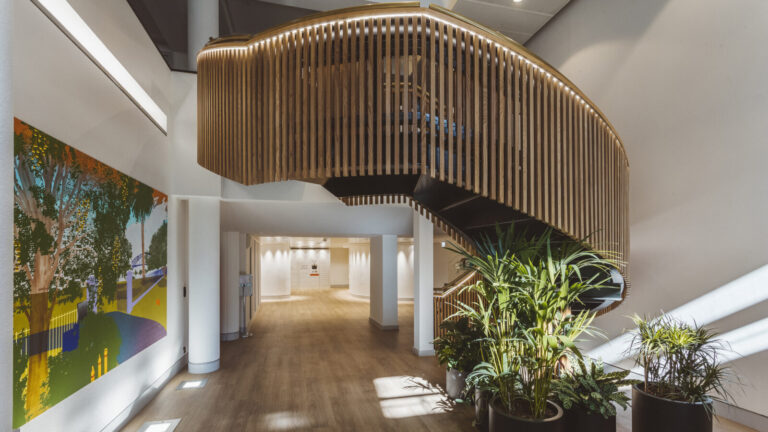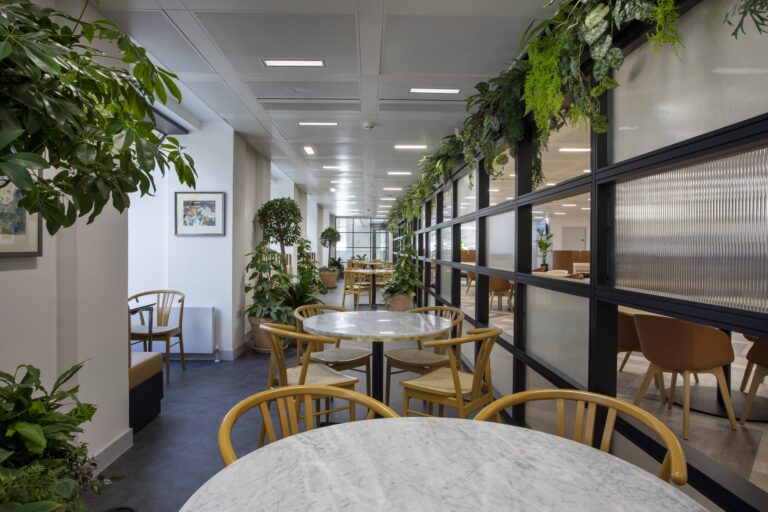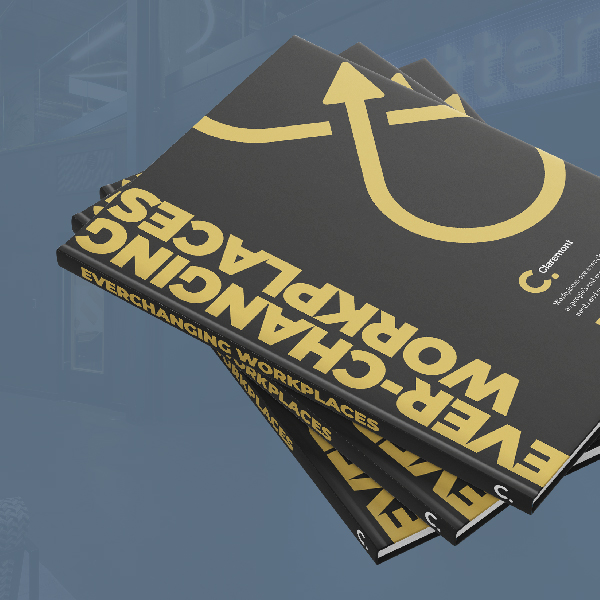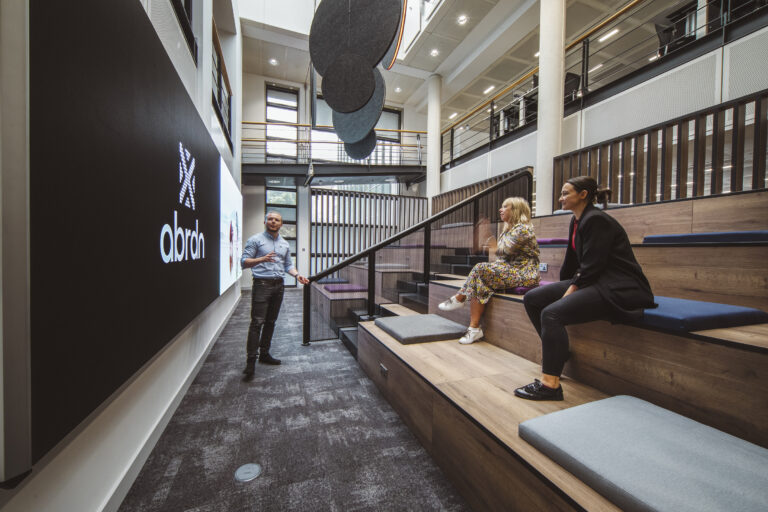
The Indirect Experience Of Nature - Part 3
Date
16 January 2024
Read length
3 min
^ ABRDN Edinburgh – A perfect example of indirect experiences of nature. Natural materials such as the wooden beams on the stairs. Evoking nature through artwork. Direct experience of nature through the use of indoor plants.
In this blog we will continue exploring the 3 pillars of biophilic design. This time, we will take a deep dive into the second pillar – indirect experience of nature.
Much like our previous blog, we will focus on a few elements that we easily incorporate into office design. These are images of nature, natural materials, natural colours, simulating natural light and air, and evoking nature.
To explore these further, we will explore an extensive study from the Journal of Environmental Psychology – Biophilic office design: Exploring the impact of a multisensory approach on human well-being (https://doi.org/10.1016/j.jenvp.2021.101682 ). They studied the effects of biophilic design interventions within an office environment and explored how it impacted on a variety of psychological factors.
Office workers were recruited to take part in this study, whereby they continued to work their office-based job in 4 variations of the same office environment.
- A control environment with no biophilic design interventions
- A visual environment, consisting of live plants, visual projections of greenery and artwork displaying nature scenes through the office space such as shade trees, natural fractal patterns, flowering plants, savannah-like landscapes, meadows, and rain.
- An auditory environment, with biophilic sounds such as wind blowing through trees, gentle streams, chirping crickets, and sounds of birds, native to the area of the US whereby the study was taking place.
- A multisensory environment, with both the audio and visual biophilic design interventions outlined above.
As part of the experiment, the cohort of office workers underwent a variety of cognitive, physiological, and psychological tests, including wearing a stress senor on their wrist, completing daily surveys, and testing their executive function.
At the end of the study, the researchers were able to conclude that, in the ‘multisensory condition’ the office workers had lower physiological stress levels, shown through reduced electrical skin conductance. They also rated themselves as feeling less stressed in the visual, auditory, and multisensory biophilic conditions compared to the control environment.
In all 3 biophilic conditions, the office workers’ cognitive performance increased. They had increased working memory and response inhibition, which have been shown to increase problem solving and are less likely to become distracted during the day. Interestingly, it became harder for the workers to ‘task switch’ in the multisensory condition. This means that if your job requires you to change your focus between multiple tasks throughout the day, a multisensory approach to biophilic design may not be the most appropriate for your office.
Alongside these more scientific measures, the workers also felt more satisfied with their enviornment, and felt that they were more productive in the biophilic offices.
In conclusion, there appears to be many benefits to the indirect experiences of nature into your office design. In particular a multisensory approach has many positive effects on office workers, such as reduced stress and increased performance. Whilst in the study outlined above, participants felt more productive, its important to note that not all colleagues would benefit from these interventions so having a range of environments for your colleagues to choose from will allow for autonomy amongst colleagues to place themselves in the environment that suits them best.
See how we could help with your new office interior design or office design and build project here
Get in touch
We love nothing better than talking all things workplace and design – got a question, potential project or just need some guidance?
Drop us a note…





